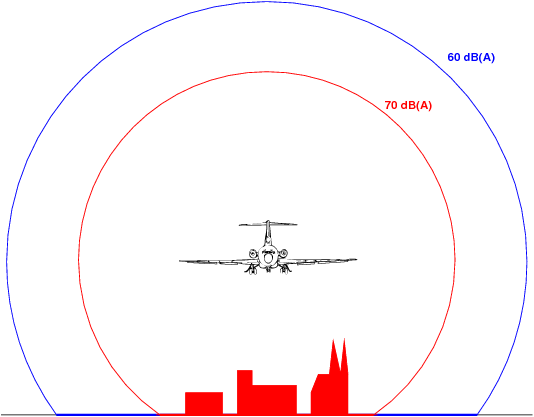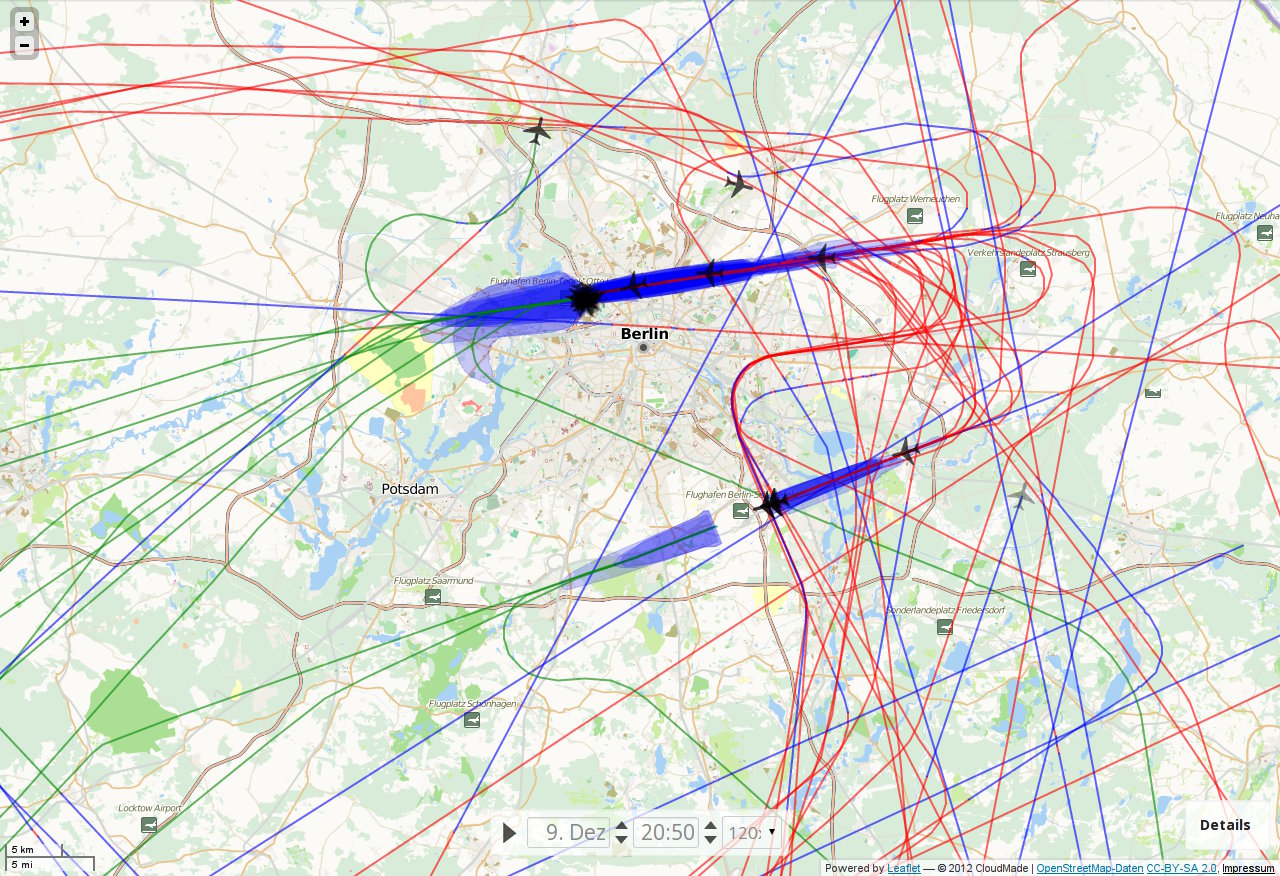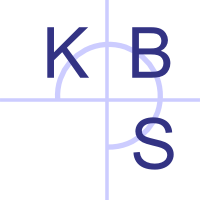Informationen zum Modell
Flugzeug-Telemetriedaten
Mit Hilfe von Telemetriedaten, die von einem großen Teil der Flugzeuge übertragen werden, lassen sich ihre Flugbahnen berechnen. Die Daten werden im Automatic Dependent Surveillance (ADS) Format (vgl. 1) vom Transponder der Flugzeuge gesendet und mit einem Funkempfänger an ein Computersystem weitergeleitet und dort aufbereitet.
Die interessanten Daten sind
- Flugzeugkennung,
- Ortsdaten,
- Flughöhe,
- Geschwindigkeit und
- Sink- bzw. Steigrate,
Die Positionsdaten werden meist durch eine Kreiselplattform erzeugt. Sie unterliegt einem geringen Drift, je nach Güte des Systems. Um dem entgegenzuwirken wird im Flugzeug mittels Funkpeilung ein Korrekturvektor ermittelt, aber leider nicht über ADS-B übertragen.
Der Betrieb eines ADS-B-Empfängers war bis zum 31.12.2016 in Deutschland legal (vgl. 2). Durch eine Änderung des Telekommunikationsgesetztes(TKG) zum 01.01.2017 herrscht im Moment Rechtsunsicherheit. Die unberechtigte Zurkenntnisnahme von Funkverkehr ist unter Strafe gestellt worden. Wie eine Berechtigung zustande kommt ist jedoch vom Gesetzgeber nicht klar ausgeführt.


Vereinfachtes Lärmmodell
In die Berechnung des Lärms gehen folgende Daten ein:
- Flugzeugtyp,
- Ortsdaten,
- Flughöhe,
- Geschwindigkeit,
- Sink- bzw. Steigrate und
- Flugphase (z.B. Start, Horizontalflug, Landung)
Die Flugphasen werden aus einer Folge von Orts- und Geschwindigkeitsdaten ermittelt. In den einzelnen Flugphasen wird eine typische Triebwerksleistung unterstellt. Das sind
- in der Startphase von Höhe 0 bis 1500ft der Vollschub (TOGA),
- in der Startphase oberhalb von 1500ft ein reduzierter Schub (MaxClimb),
- im Horizontal- bzw. Sinkflug mit einer Geschwindigkeit von mehr als 230kn wird angenommen, dass die Landeklappen und das Fahrwerk eingefahren sind,
- im Horizontal- bzw. Sinkflug mit einer Geschwindigkeit von weniger als 230kn wird angenommen, dass Landeklappen und Fahrwerk ausgefahren sind.
Dabei wird das maximal zulässige Landegewicht des Flugzeugtyps angesetzt, da das tatsächliche Landegewicht aus Effizienzgründen nur knapp unter dem maximalen Landegewicht liegt.
Aus der ermittelten Triebwerksleistung lässt sich wiederum durch Tabellen ein Lärmpegel in definiertem Abstand zum Flugzeug errechnen (vgl. 3, Abs. 4.2). In dem vereinfachten Lärmmodell wird ein Kugelstrahler angenommen, bei dem die maximale Lärmeinwirkung auf die Umgebung im rechten Winkel zur Flugbahn erfolgt. Für den Fall, dass der Schall flacher als 50° auf den Boden einwirkt, wird eine zusätzliche Dämpfung berücksichtigt (vgl. 3, Abs. 4.5.4).
Quellen
- Guidance Material for Mode S-Specific Protocol Application Avionics; R.D. Grappel, R.T. Wiken; Lincoln Laboratory, 2007
- Verwaltungsgericht Köln, Entscheidung vom 03.09.2008, Az. 1 L 1048/08
- ECAC.CEAC Doc 29; 3rd Edition; Report on Standard Method of Computing, Noise Contours around Civil Airports, Volume 2: Technical Guide; 2005


